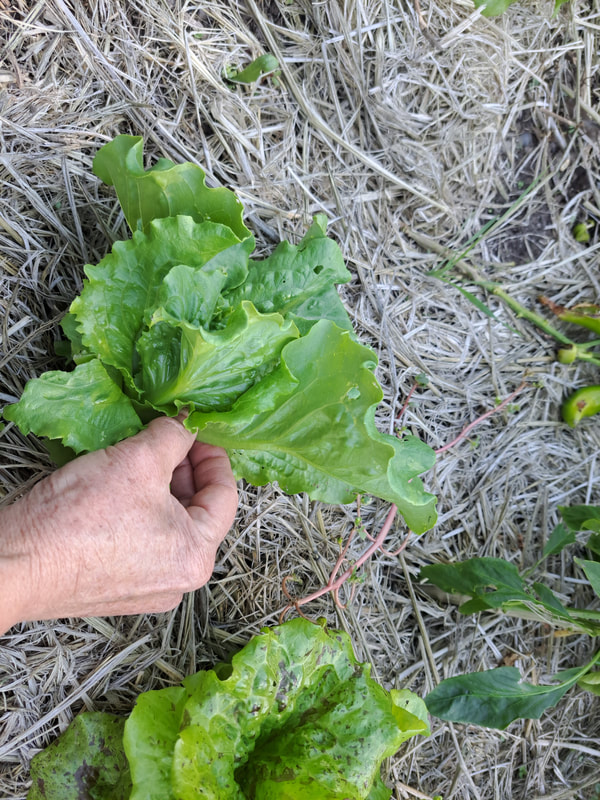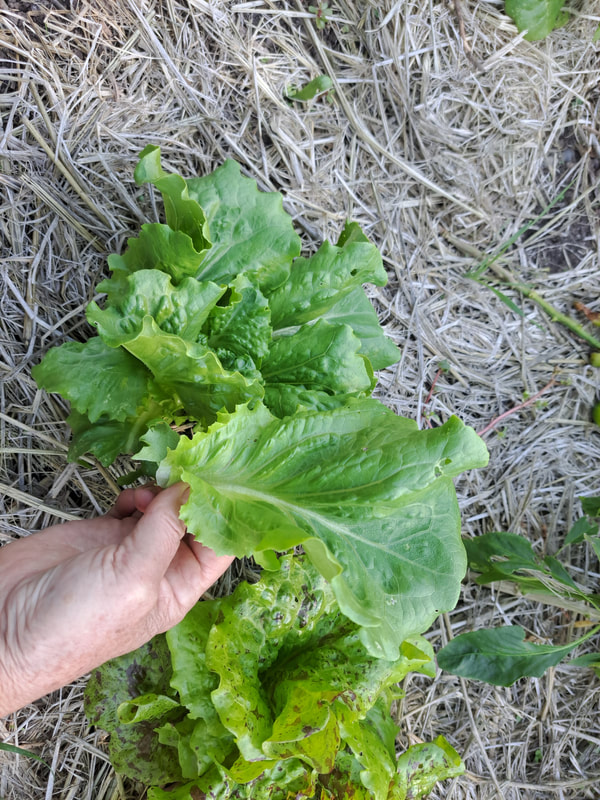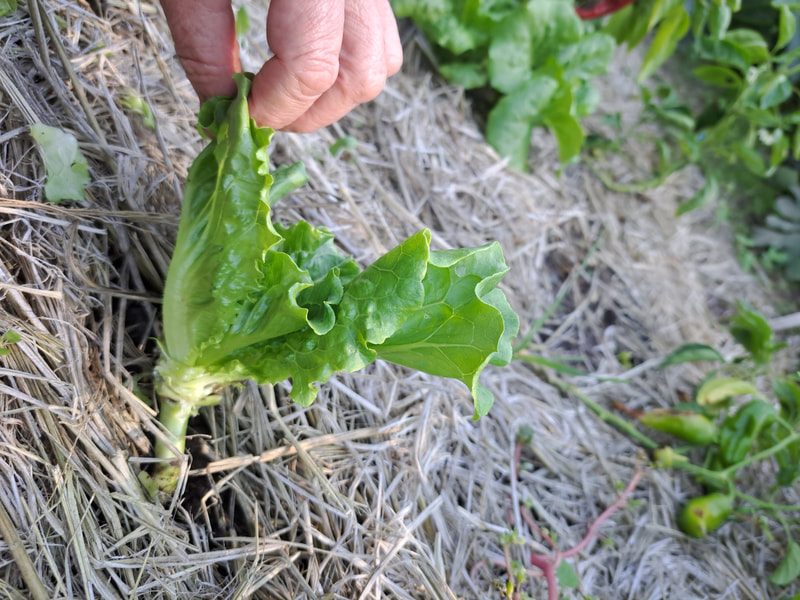- Home
-
Shop
- Plant for Summer
-
Vegetable Seeds
>
- Arugula
- Beans
- Beets
- Broccoli and Cima di Rapa
- Cabbage
- Carrots & Roots
- Celery
- Chard
- Corn
- Cucumber
- Eggplant
- Fennel
- Genepools and Landrace Gardening
- Greens
- Kale and Collards
- Lettuce
- Melons
- Oil Crops
- Okra
- Open-Source Seeds (OSSI)
- Onions and Leeks
- Peas
- Peppers
- Spinach
- Squash & Pumpkins
- Sunflowers
- Tomatoes
- Tomatillos/Husk Cherries
- Turnips and Rutabagas
- Perennial Vegetables >
- Flower Seeds
- Herb Seeds >
- Seed Collections
- Pollinator and Pest Control Plants >
- Grains >
- Cover Crops >
- Open Source (OSSI)
- Start these Indoors
- People behind the Seeds >
- Companion Plants
- Recipes >
- Fast, Fresh Food
- Plant for Spring >
- Plant for Fall >
- About Us.
- Blog
- HOW-TO
- Mid-to-Late Summer Sowings
|
Fall harvests are different from ongoing summer harvesting. The goal is to bring in everything that's usable, before damp and cold ruin them. Here are some tricks I've learned to prolong the harvest, improve quality, and preserve things longer in good condition. You'll find tips for greens, squash, peppers, tomatoes, and herbs. 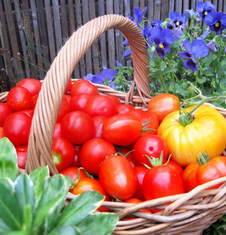 Tomatoes are many folks' first concern. You can help keep them going longer by removing dead or yellowing leaves, providing good air circulation (by pulling out less-productive plants if need be) and covering them if overnight frosts are predicted. You can also ripen fruit faster by cutting the plants back. If you clip off the tips of the vine that have new flowers and very immature (dark green, undersized) tomatoes, the plant can put all of its energy into ripening those that have a real chance of being usable. However, they won't go forever, and if you are seeing cracking, mold, soft spots, frost damage, or brown stems, it's time to call it quits on the season. If a heavy rain is forecast, that is another cue to harvest. When the plants get a lot of water all at once, they take it up so fast that it expands the fruit, making them crack, spoil faster, and lose flavor. You will want to harvest all usable fruit, then cut the plant at ground level and compost it. (or cut branches off and take them under cover for picking and sorting.) As you pick, sort the tomatoes into 3 boxes or pails:
Unripe tomatoes should be stored longer-term at cool room temperature; the floor or a pantry or back room is good. The best way I know of to ripen and store tomatoes is to use box flats--the cardboard trays that result when stores cut boxes of drinks or canned goods for display. Some people call them beer flats; any store that handles beer or soft drinks will have them if you can get them before they are put in compactor. Whatever container you use, the tomatoes should be in a single layer, and it saves a lot of time in the end if you arrange them from most ripe to least ripe in the box, shelf, floor, or whatever. Check them every few days, and remove both the usable ones and those that are leaking, moldy, or dubious in any way. 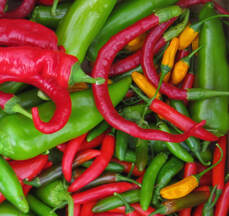 Peppers are another summer crop that can't go long in cold wet fall conditions. There are several great ways to store and use them. Hot peppers are more adaptable, faster-ripening, and less susceptible to mold, so keep a close eye on sweet peppers and cook them soonest. I like to keep some pepper plants in pots, especially if they need a long season or are very susceptible to sunscald. Their small root systems adapt well to a large pot, and they prefer a light soil, so potting mix works well for them. I can move the containers so that they get midday shade when the danger of sunscald is great, and full sun during the early and late parts of the season
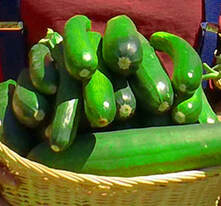 Summer squash are a feast-or-famine kind of thing. Hyper-abundant during the season, then gone. You may eke out a few extra harvests or get past a freak early frost by covering the plants with bedsheets. Then when you have a good day for harvest and frost is in the forecast, take everything you can and compost the plants. Every part of the plant is edible. So if you're really trying to save money or you are short on other foods, you can cook (and freeze afterwards, if desired) the young foliage and growing tips. They have a pleasant mild flavor and lose their prickles when cooked.
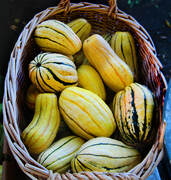 Winter Squash will store for months and months indoors, but it can't stand any frost. As the vines start to look yellow and wilty in the fall, get ready for harvest. You might want to cut back on water so the ground is not wet and the fruit starts to harden more. You can also cut the vines so that no new squash fruits are formed. Flowers and immature fruits are both edible and delicious--the very young fruits are just like summer squash. If these are removed, the plant's energy will all go into sweeter, longer-storing mature fruit.
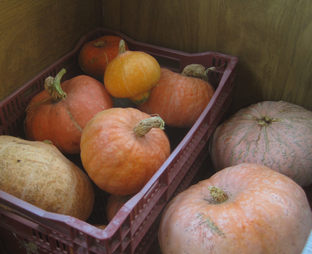 Curing is the step that helps the squash store longer at room temperature, and fully develops the sugars that give great flavor. To cure, the fruit needs a dry warm place with good air circulation for at least a week. Ideal curing temperature is 80 to 85 degrees. If daytime temperatures are still warm, you can use any dry airy place. Our nights are cold and dewfall is heavy, so I bring them inside and put them in the loft. After curing, you can store squash anywhere that is dry (humidity below 85%) and not freezing--55-60 degrees is ideal, but I just put them under the bed or on the floor somewhere. Milk crates work well to store squash, allowing them to be contained and compact but still airy. Start eating delicata and acorn squash first; they are good from harvest until January. Butternut (moschata) and maxima squashes keep developing their flavor until November, and usually store in good condition into the spring. 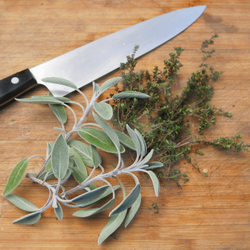 Herbs vary a lot in how they can best be stored, or even if they need to be.
Greens are hardier than summer crops, and don't need to be all taken in at once, unless deep, deep cold is expected. But the way you manage and harvest greens can make the difference between a slug-ridden, unpalatable crop and one you can use and enjoy all winter. Of course, cabbage is supposed to make a head for harvest all at once. But most leafy greens can be managed so that each plant can be "cut and come again." Collards, kale, chard, and Asian greens like Tatsoi do well with this style of harvest. Lettuce and Salad Greens:
Most commercial operations get a cut or two of baby greens and then replant. But with the right kind of harvest, yours can keep growing and giving good harvests for several months. The photos above show how.
2 Comments
9/1/2023 09:49:57 am
I wanted to express my gratitude for your insightful and engaging article. Your writing is clear and easy to follow, and I appreciated the way you presented your ideas in a thoughtful and organized manner. Your analysis was both thought-provoking and well-researched, and I enjoyed the real-life examples you used to illustrate your points. Your article has provided me with a fresh perspective on the subject matter and has inspired me to think more deeply about this topic.
Reply
9/1/2023 09:56:03 am
wanted to express my gratitude for your insightful and engaging article. Your writing is clear and easy to follow, and I appreciated the way you presented your ideas in a thoughtful and organized manner. Your analysis was both thought-provoking and well-researched, and I enjoyed the real-life examples you used to illustrate your points. Your article has provided me with a fresh perspective on the subject matter and has inspired me to think more deeply about this topic.
Reply
Leave a Reply. |
Proudly powered by Weebly
- Home
-
Shop
- Plant for Summer
-
Vegetable Seeds
>
- Arugula
- Beans
- Beets
- Broccoli and Cima di Rapa
- Cabbage
- Carrots & Roots
- Celery
- Chard
- Corn
- Cucumber
- Eggplant
- Fennel
- Genepools and Landrace Gardening
- Greens
- Kale and Collards
- Lettuce
- Melons
- Oil Crops
- Okra
- Open-Source Seeds (OSSI)
- Onions and Leeks
- Peas
- Peppers
- Spinach
- Squash & Pumpkins
- Sunflowers
- Tomatoes
- Tomatillos/Husk Cherries
- Turnips and Rutabagas
- Perennial Vegetables >
- Flower Seeds
- Herb Seeds >
- Seed Collections
- Pollinator and Pest Control Plants >
- Grains >
- Cover Crops >
- Open Source (OSSI)
- Start these Indoors
- People behind the Seeds >
- Companion Plants
- Recipes >
- Fast, Fresh Food
- Plant for Spring >
- Plant for Fall >
- About Us.
- Blog
- HOW-TO
- Mid-to-Late Summer Sowings

